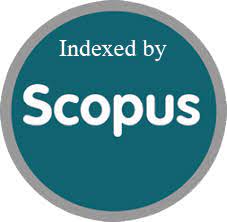Can Adhd Present In Dyke-Davidoff-Masson Syndrome? A Case Report
DOI:
https://doi.org/10.52783/jns.v14.3859Keywords:
N\AAbstract
Background: Dyke-Davidoff-Masson Syndrome (DDMS) is an uncommon neurological disorder primarily characterized by unilateral cerebral hemiatrophy with compensatory cranial changes. Clinical manifestations typically include seizures, hemiparesis, and developmental delays. While various neuropsychiatric presentations have been sporadically reported, the occurrence of Attention-Deficit/Hyperactivity Disorder (ADHD) as a comorbidity remains undocumented.
Case Presentation: We describe a 4-year-old boy with a known diagnosis of DDMS since birth who subsequently developed generalized tonic-clonic seizures and, independently, began exhibiting cardinal features of ADHD—namely inattention, hyperactivity, and impulsivity. These symptoms persisted even after seizure control was achieved. Neuroimaging revealed the classic structural hallmarks of DDMS, including left-sided cerebral atrophy, ipsilateral ventricular dilatation, and a notable midline shift. Following multidisciplinary evaluation, the child was started on methylphenidate for ADHD, despite concerns regarding a lowered seizure threshold. This therapeutic approach led to significant behavioral improvement with no recurrence of seizures.
Conclusion: This case highlights a previously unreported association between DDMS and ADHD, underscoring the importance of broad, individualized management strategies in children with structural brain anomalies. Further research is warranted to clarify the shared neurobiological pathways and refine treatment options for this rare co-occurrence
Downloads
Metrics
References
Dyke CG, Davidoff LM, Masson CB. Cerebral hemiatrophy and homolateral hypertrophy of the skull and sinuses. Surg Gynecol Obstet. 1933;57:588–600.
Sener RN. MR of craniocerebral hemiatrophy. Clin Imaging. 1992;16(2):93–7.
Kumar TS, Vipul A, Yadav R. Dyke-Davidoff-Masson Syndrome: a delayed diagnosis. J Med Res Innov. 2018;2(2):e000121.
Sharma S, Goyal D, Negi A, et al. Dyke-Davidoff-Masson Syndrome. Indian J Radiol Imaging. 2006;16(2):165–6.
Narra R, Kamaraju S, Pasupaleti B, et al. Dyke-Davidoff-Masson syndrome: a case report. Afr J Med Health Sci. 2015;14(2):150.
Volkow ND, Swanson JM. Clinical practice: adult ADHD. N Engl J Med. 2013;369(20):1935–44.
Castellanos FX, Lee PP, Sharp W, et al. Developmental trajectories of brain volume abnormalities. JAMA. 2002;288(14):1740–8.
Ayas ZÖ, Asil K, Öcal R. Spectrum of Dyke-Davidoff-Masson Syndrome. Neurol Sci. 2017;38(10):1823–8.
Sagvolden T, Johansen EB, et al. ADHD subtypes: a developmental theory. Behav Brain Sci. 2005;28(3):397–468.
Wender PH, Wolf LE, Wasserstein J. Adults with ADHD. Ann N Y Acad Sci. 2001;931(1):1–16.
Castellanos FX, Proal E. ADHD: beyond prefrontal-striatal models. Trends Cogn Sci. 2012;16(1):17–26.
Kessler RC, Adler L, Barkley R. Prevalence of ADHD in adults. Am J Psychiatry. 2006;163(4):716–23.
Dalsgaard S, Østergaard SD, et al. ADHD mortality risk. Lancet. 2015;385(9983):2190–6.
Harchut N, et al. ADHD in children with brain insults. Child Neuropsychol. 2019;23(5):520–8.
Protopopescu X, et al. Brain imaging in ADHD. Biol Psychiatry. 2012;72(10):879–86.
Weller EB, Weller RA. ADHD treatments. Pediatr Clin N Am. 2004;51(3):575–98.
Scahill L, Schwab-Stone M. ADHD prevalence. Child Adolesc Psychiatr Clin N Am. 2000;9(3):541–55.
Barkley RA. ADHD: a handbook for diagnosis and treatment. New York: Guilford Press; 2018.
Spencer TJ, et al. Pharmacology of ADHD medications. Biol Psychiatry. 2005;57(11):1326–33.
Castellanos FX, Proal E. Large-scale brain systems in ADHD: beyond the prefrontal-striatal model. Trends Cogn Sci. 2012;16(1):17–26.
Sagvolden T, Johansen EB, Aase H, Russell VA. A dynamic developmental theory of attention-deficit/hyperactivity disorder (ADHD). Behav Brain Sci. 2005;28(3):397–468.
Kessler RC, Adler L, Barkley R, Biederman J, Conners CK, Demler O, et al. The prevalence and correlates of adult ADHD in the United States. Am J Psychiatry. 2006;163(4):716–23.
Barkley RA. ADHD and the nature of self-control. New York: Guilford Press; 1997.
Volkow ND, Wang GJ, Kollins SH, Wigal TL, Newcorn JH, Telang F, et al. Evaluating dopamine transporter activity in ADHD. JAMA. 2009;302(10):1084–91.
Shaw P, Eckstrand K, Sharp W, Blumenthal J, Lerch JP, Greenstein D, et al. ADHD: delay in cortical maturation. Proc Natl Acad Sci U S A. 2007;104(49):19649–54.
Dalsgaard S, Østergaard SD, Leckman JF, Mortensen PB, Pedersen MG. Mortality in children, adolescents, and adults with ADHD. Lancet. 2015;385(9983):2190–6.
Harchut N, Germain ML, Baillargeon L. Developmental psychopathology in children with perinatal brain insults. Child Neuropsychol. 2019;23(5):520–8.
Weller EB, Weller RA. Treating ADHD in children and adolescents. Pediatr Clin N Am. 2004;51(3):575–98.
Spencer TJ, Brown A, Seidman LJ, Valera EM, Makris N, Lomedico A, et al. ADHD treatments and outcomes. Biol Psychiatry. 2005;57(11):1326–33.
Ayas ZÖ, Asil K, Öcal R. The clinical-radiological spectrum of Dyke-Davidoff-Masson syndrome in adults. Neurol Sci. 2017;38(10):1823–8.
Protopopescu X, Pan H, Altemus M, Tuescher O, Epstein J, Root JC, et al. Functional imaging of stress responses in children with ADHD. Biol Psychiatry. 2012;72(10):879–86.
Scahill L, Schwab-Stone M. Epidemiology of ADHD in school-age children. Child Adolesc Psychiatr Clin N Am. 2000;9(3):541–55.
Barkley RA. ADHD in adults: a handbook for diagnosis and treatment. 3rd ed. New York: Guilford Press; 2018.
Shaw P, Gilliam M, Liverpool M, Weddle C, Malek M, Sharp W, et al. Cortical development trajectories in ADHD. Biol Psychiatry. 2011;70(3):279–87.
Volkow ND, Swanson JM. Adult ADHD: Clinical practice and neurobiology. N Engl J Med. 2013;369(20):1935–44.
Castellanos FX, Lee PP, Sharp W, Jeffries NO, Greenstein DK, Clasen LS, et al. Developmental trajectories of brain volume abnormalities. JAMA. 2002;288(14):1740–8.
Downloads
Published
How to Cite
Issue
Section
License

This work is licensed under a Creative Commons Attribution 4.0 International License.
You are free to:
- Share — copy and redistribute the material in any medium or format
- Adapt — remix, transform, and build upon the material for any purpose, even commercially.
Terms:
- Attribution — You must give appropriate credit, provide a link to the license, and indicate if changes were made. You may do so in any reasonable manner, but not in any way that suggests the licensor endorses you or your use.
- No additional restrictions — You may not apply legal terms or technological measures that legally restrict others from doing anything the license permits.










